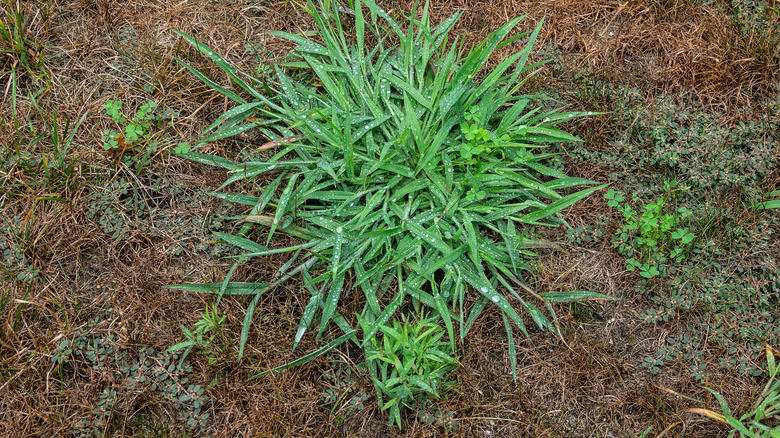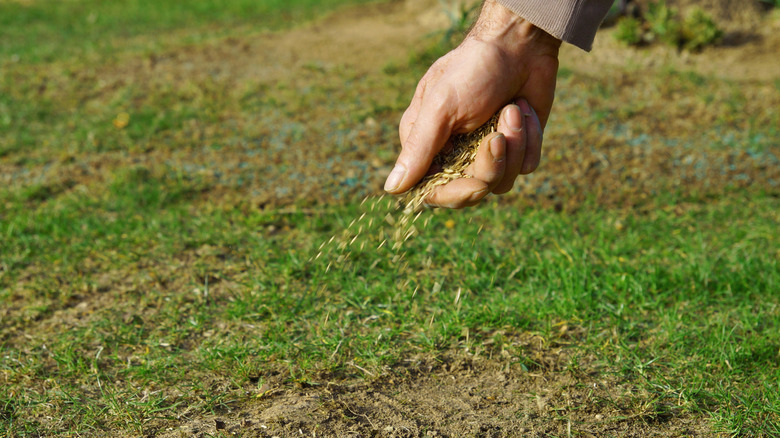The Lawn Care Task That Can Help Prevent Crabgrass From Growing In Your Yard
It may have "grass" in the name, but most homeowners want to kill the crabgrass in their lawn since it's an unwanted, invasive weed. This plant is unsightly, can attract pests and disease, and is hard to kill. That's why it's so important to take a proactive approach and prevent it from growing in your yard in the first place. By frequently reseeding and overseeding your lawn, you can prevent crabgrass from taking root.
Crabgrass grows in "bald" areas of a yard that receive plenty of sunshine throughout the day – that is, areas that have little or no grass. Reseeding and overseeding your lawn, especially on spots where grass is sparse, can result in a lush, healthy lawn without harsh chemicals by filling in those empty areas. As the grass grows and thickens, it makes it more difficult for crabgrass to take root. This weed simply can't compete with a dense lawn, especially if you plant seeds of thick grass species.
When to overseed to thwart crabgrass growth
Overseeding your lawn is just what it sounds like: planting grass seed over your existing lawn. While it's nice to have this easy option to prevent crabgrass from showing up in your lawn, it doesn't mean you can spread grass seed any time of the year and expect the same results. You need to be mindful of the season and your geographic location. If you live in the North part of the U.S., it's best to overseed your lawn in the fall. Those in the South will see optimal results by overseeding in late spring through mid-summer.
These times of year are best for overseeding because these seasons offer sufficient time for the seedlings to grow before winter. Plus, soil temperatures are typically ideal for young plants, allowing for optimum germination rates and vigorous growth. While you can overseed a little later in the year, you likely won't see the same results. With regular overseeding and reseeding at the right time of year, you can help keep crabgrass away for good.

